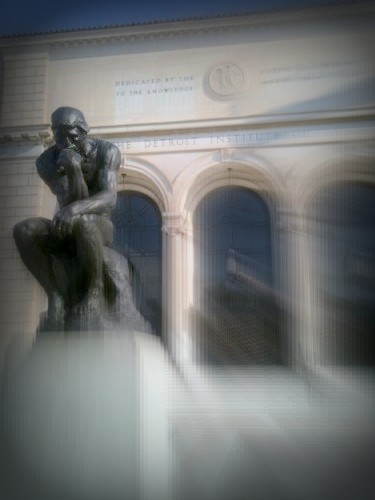
Detroit is Hockey Town. And the Detroit Red Wings franchise is one of the greatest sports franchises of all time. As part of the original six, they are a part of the solid foundation on which the current league rests. Gordie Howe, Ted Lindsay, Steve Yzerman, Nicklas Lidstrom and Pavel Datsyuk are hockey lore past and present. Detroit wins Stanley Cups. Detroit has made the playoffs for the last 21 seasons in a row -- the longest streak of post-season appearances. The idea of Detroit losing the Red Wings or even diminishing the team's excellence is unthinkable.
If Detroit was faced with losing the Red Wings, Detroit would rally. In fact, the entire state would rally behind the Red Wings. If people talked about disbanding the team, or releasing some of the prized players to free up some cash, those people would be booed out of city and probably the state.
Why do we love the Red Wings? We love the Red Wings because we get emotionally invested. We feel the hits. We have a visceral reaction to the team's wins and losses.
I grew up in a hockey family. I played when I was really young, and I watched my two older brothers play (and my dad often coached their teams). Hockey rinks are cold, cavernous, loud and magical. You know something great is about to happen. The hairs on your neck stand on end as the puck drops, and then you become entranced as players glide across the ice. The more you know about the players, the more you appreciate their different moves, efforts, successes and failures. Hockey is exhilarating.
Luckily, Detroit and Michigan as a whole appreciates the Red Wings.
But what if we lost the Detroit Institute of Arts? As part of the original six U.S. art museums, the DIA is a major part of the solid foundation on which current museums rest. The DIA was the first U.S. museum to purchase paintings by Vincent van Gogh; it is one of only two U.S. museums to own a major work by Pieter Bruegel the Elder; its American collection is the top collection in the United States; and the list goes on and on. The list goes on and on because the DIA has not diminished its collection or hastened its mission to bring masterpieces to Detroit, to Michigan, to the world. The DIA has done this with an unsustainable operating model: its operating model has devolved from a mix of public and private funds, to a model almost entirely reliant on the private sector.

The idea of Detroit losing the DIA or the DIA being less than what it is has caused an outpouring of support. And Detroit will rally. This Friday, August 3, local artists will rally at the DIA's steps at 10 a.m., and they will distribute free art. Skidmore Studio's Free Art Friday Detroit organized local artists to gather and support the DIA's latest funding solution. These artists will share their gifts to bring attention to a tremendous gift left to this community. These artists will show their support for the DIA's plan to create a sustainable operating model through a tri-county millage.
The millage vote takes place on August 7, and it asks Macomb, Oakland and Wayne County residents to help restore some public funding to this great institution. This institution shines a powerful and positive light on this region's celebrated past and hopeful future. The millage goes toward a structural problem in a relatively non-intrusive way. In general, residents will pay annually about $15 per year for every $150,000 of their home's fair market value. Think about it, if you could spend $15 a year to make sure we had one of the top hockey franchises in the world, wouldn't you do it? If you could spend $15 a year to keep Datsyuk on the team and healthy, wouldn't you do it?
I've seen some commentary where people ask why Detroit doesn't sell some of the artwork to meet the DIA's financial problems. It doesn't sell the artwork because it wouldn't take care of the structural problems, but it would diminish the museum; when sold, the paintings would likely be gone forever; less people would be willing to donate artwork to the museum; and it would push a venerable museum toward mediocrity. Namely, it would hasten the worst case scenario rather than making a real and permanent change so that this generation can be mindful stewards for future generations.
If you are a Red Wings fan, but you haven't gone to the Detroit Institute of Arts in a long time or ever, you owe it to yourself to go. Those thrills of a hockey game -- the hits, the impossible goals, the last minute wins -- can be found in a painting, a drawing, or a sculpture. Museums collect and show triumphs of individual expression. The DIA (more than most museums) also makes art accessible. Through its interactive displays, gallery structures, and exhibits, the DIA puts works of art in context to help ensure that visitors have that important visceral reaction to the artwork.
Simply put, this community is blessed with one of the original six U.S. art museums. We stand on a solid base, which allows us to see and be amazed by the great artistic achievements of the past and present. We can fortify that base as a gift to the next generation, or we can let it slowly crumble. All Michigan communities would rally for the Red Wings, we need to rally for the DIA.
